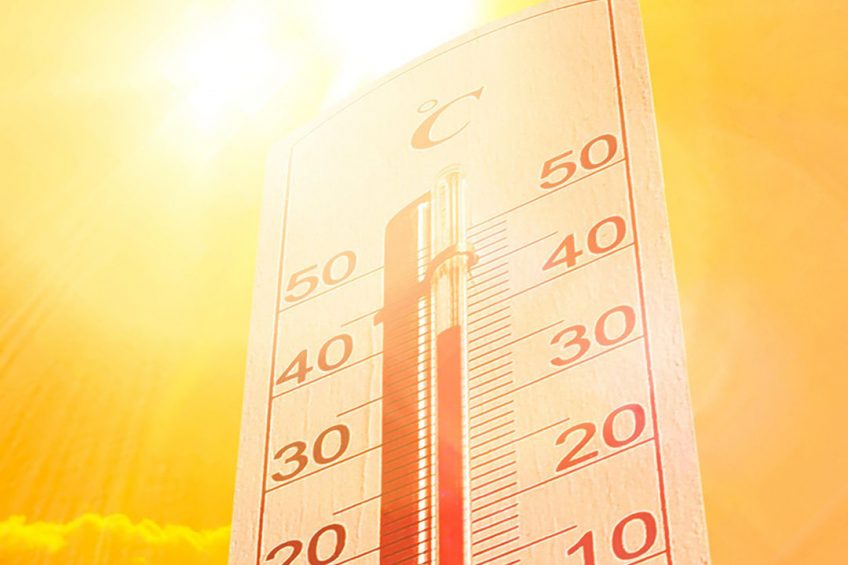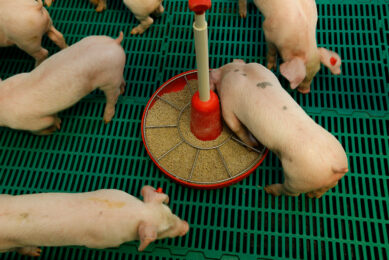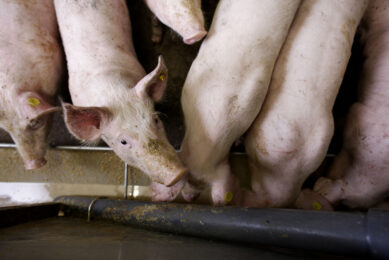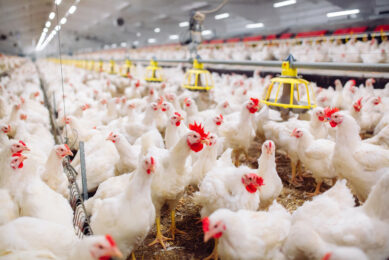Hydroxy-Selenomethionine: Ensuring performance under heat stress

Heat stress is responsible for large economic losses in the livestock industry throughout the world. Nutritional solutions can be introduced to help animals cope better to a situation of stress. Antioxidants, selenium in particular, have a key role to play.
Micro-nutrient supplements are particularly important under heat stress conditions, as they are involved in biological systems, whereby they are able to limit and/or decrease the negative consequences of oxidative stress, which are known to increase when animals experience hyperthermia. Selenium (Se) plays a key role in antioxidant nutritional solutions. Selenium imbalances in livestock can result in altered growth, reproduction and health. Selenium deficiency also results in an imbalance of redox homeostasis and ultimately in oxidative stress.
When animals suffer from heat stress, they adopt several strategies to dissipate excess heat. They increase their water consumption significantly and decrease their feed intake, thus reducing their nutrient/micronutrient uptake. Moreover they dissipate energy by increasing their heart rate, panting and by means of other metabolic adaptations. All these events have a detrimental effect on their performance, in terms of average daily gain, feed efficiency, liveability and milk production. These metabolic changes induce an overproduction of free radicals at the cellular level. These free radicals include reactive oxygen species (ROS), which are known to seriously damage such biological molecules as lipids, protein and DNA. In order to counteract these challenges, the cell needs to be protected by means of the boosting of antioxidant activities.
The benefits of antioxidants
It has been shown that, under heat stress conditions, supplementing diets with antioxidants can help animals to prevent or cope with the negative effects. Selenium is an indispensable component of the antioxidant system, and it is involved in all the levels of antioxidant defence. For instance, Se can be used to synthesise glutathione peroxidase (GSH-Px), a key antioxidant that protects the body from free radical damage. Increased levels of GSH-Px have in fact been observed in heat stressed animals. Selenium has been demonstrated to significantly increase serum GSH-Px activity. This difference in GSH-Px activity in blood was observed to be maintained after heat stress, and the response of the heat shock protein (HSP70) to heat stress was different for animals fed different sources of selenium: it increased in a selenite-fed group, but decreased in an organic-Se fed group, thus indicating that the animals overcame heat stress more easily.
OH-SeMet in heat-stressed broilers
In collaboration with the INRA (URA, France), the effect of pure organic selenium hydroxy-selenomethionine (OH-SeMet 0.2 ppm Se, Selisseo) or sodium selenite (SS 0.2 ppm Se) supplementation has been evaluated on the growth performance of Cobb 500 broilers exposed to heat stress. The animals were fed experimental diets for 5 weeks. Half of the birds were kept in a thermo-neutral environment for the whole period, while the other half was kept in a thermoneutral environment for the first 2 weeks and then at 32°C for the last 3 weeks of the trial. Heat stress induced a drop in growth performance for both selenium treatments. However, the OH-SeMet-fed broilers were 52g heavier at d35, and the feed conversion ratio was one point better than the SS-fed broilers. This study suggests that OH-SeMet is better able to support and ensure the performance of broilers than mineral selenium during heat stress.
Another experiment was designed, in collaboration with the University of Ghent, Belgium, in which a cyclic heat stress model was used to study the effects of dietary supplementation of OH-SeMet on Ross 308 broilers. In the finisher phase (day 25 to day 39), the temperature was increased from 22°C to 34°C (50-60% humidity) for 6 hours per day. The broilers were reared for 39 days and fed a diet with either a 0.3 ppm Se feed from SS or a 0.3 ppm Se feed from OH-SeMet. When cyclic heat stress was applied, a significant improvement in FCR was observed for the OH-SeMet-fed group, compared to the SS-fed group (1.56 vs. 1.62, respectively), see Figure 1.
Figure 1 – Effect of selenium sources on the feed efficiency of broilers under cyclic heat stress.

Mortality in the finisher period, which increased substantially under cyclic heat stress, was -4.2 points lower for the OH-SeMet fed birds than the birds fed SS. Moreover, the Se levels in plasma were significantly higher in the OH-SeMet group than in the SS group, thus confirming the higher bioavailability of the organic form. Broiler fed OH-SeMet showed less plasma heat shock protein 70 (HSP70), which is an indication of less oxidative damage in the cells.
OH-SeMet in heat stressed dairy cows
The effects of OH-SeMet have recently been compared with the effects of SS in a dairy cow study, conducted at the Chinese Academy of Agricultural Sciences. 8 cows were fed either a diet containing SS or OH-SeMet at 0.3 ppm.
The animals were subjected to heat stress for a period of 9 days (32-36°C, and 40% relative humidity). The obtained results confirmed the higher bio-efficacy of OH-SeMet than SS and pointed out a significant positive modulation of several oxidative stress biomarkers (improved total antioxidant capacity, decreased plasma H2O2 and nitric oxide), see Figure 2. Moreover, milk production was maintained at a higher level in the OH-SeMet-fed cows. These results are an additional demonstration of the fact that OH-SeMet helps animals to face heat stress situations and ensure their performance.
Figure 2 – Effect of selenium source T-AOC & oxidative stress biomarkers on dairy cows under heat stress.

The selenium insurance policy
Maintaining the antioxidant balance, by ensuring an adequate production of selenoproteins, is the key to ensuring the performance of animals under heat stress. Feeding animals with a pure form of organic Se, such as OH-SeMet, enhances selenium deposition in the tissues, thus creating Se tissue reserves that act as a ‘selenium insurance policy’. This selenium insurance enables animals to produce sufficient amounts of antioxidant enzymes under heat stress, when feed intake is reduced, and results to be an effective way of ensuring growth and productive performance of livestock and reducing the mortality rate in broilers under this challenging condition.
References available on request
Authors: Michele De Marco, Global Scientific and Technical Manager and Mickael Briens, Micronutients Expert, Adisseo






